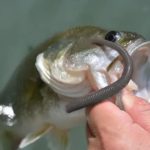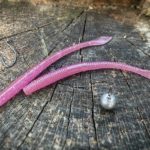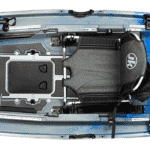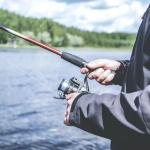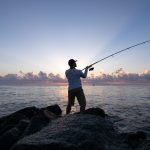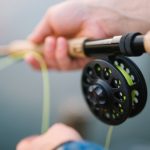The wacky rig has become a very popular way to catch bass. In this article you’ll learn which lures, setups, and techniques work best for the wacky rig.
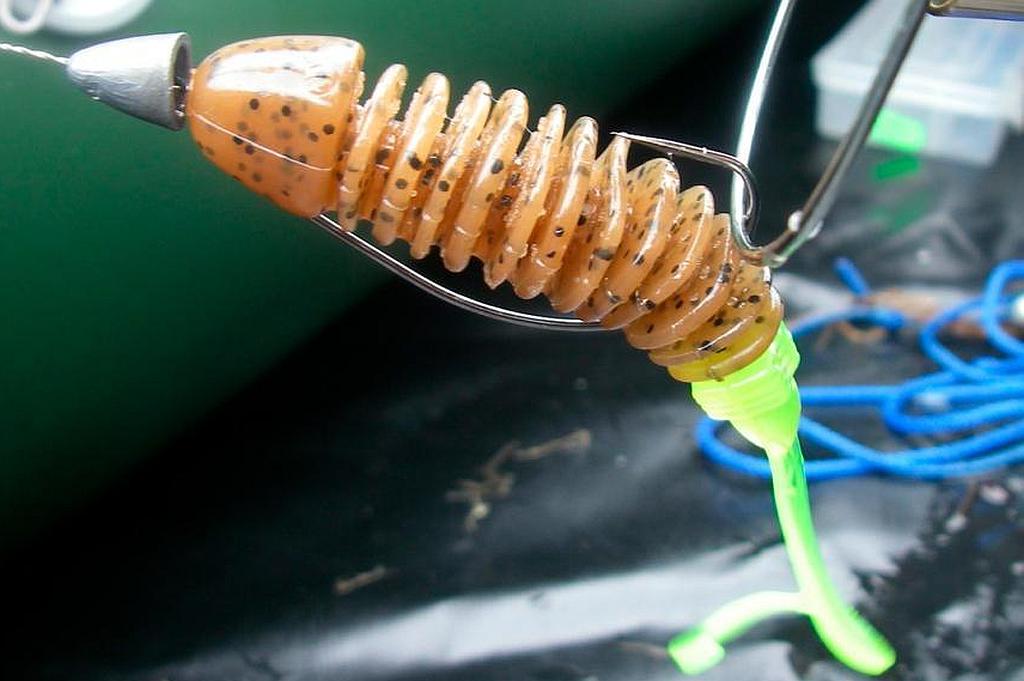
In this article, we’ll cover the fundamentals of the Texas Rig, how to set them up, and how to fish these unique rigs to catch monster bass.
There’s no question about it: Big bass like heavy cover. And when fishing thick cover, few rigs can compete with the classic Texas Rig.
As an affiliate of Amazon and other retailers, we may earn a small commission when you buy via our links, at no additional cost to you. Thank you!
What is a Texas Rig?
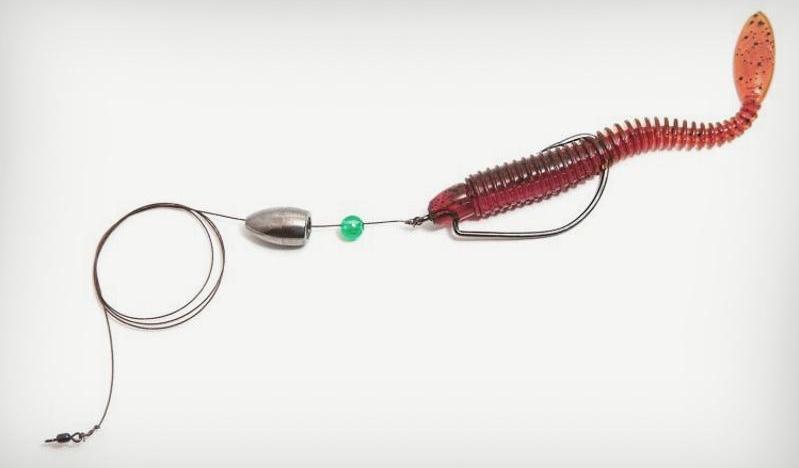
In its simplest form, a Texas Rig consists of a hook threaded through the nose and body of a soft plastic bait with a bullet-shaped weight threaded on the line above the bait. Typically these rigs are set up weedless and the weight near the nose allows the bait to get down to where the fish are.
How to Set Up a Basic Texas Rig
Step 1: Thread the hook through the nose of the bait.
Using your soft plastic bait of choice, push the hook point through the nose of the bait, in line with the body.
I like to pinch the nose of the plastic with my thumb, index and middle finger while doing this. Then gently turn and push the hook point out of the bottom of the bait, about ¼” from the nose.
Step 2: Pull the hook through until eye is flush with nose and turn hook
With the hook point now sticking out of the bottom of the bait, simply pull the hook through until the eye is flush with the nose. Then turn the hook so that the point is facing the body again.
Offset hooks have a 90 degree bend just below the eye and if inserted properly, you will feel the hook line up easily in the nose of the plastic.
Step 3: Insert hook point into body of soft plastic
Lay the soft plastic and hook on top of one another to judge where the bend meets the bait, then kink the bait and insert the hook point at that spot.
Make sure that after you’ve inserted the hook point that the bait isn’t crimped or stretched. If it is, back the hook out and try again until the plastic is perfectly straight on the hook and the point is buried.
The point of the hook should be just under the surface of the back side of the bait. This way when you set the hook, the point can finish piercing the plastic.
Texas Rig Baits
One of the advantages of this versatile rig is the wide variety of baits that can be used. Almost any of your popular soft plastics can be rigged up texas style and in whatever size you prefer.
Worms
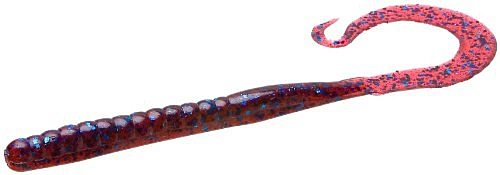
Many different styles and sizes of plastic worm work well as a Texas rigged worm. Even some of your big worms in the 8” – 10” range can be used this way. My personal favorites are the ribbon tails or curly tail worms in green pumpkin.
The Zoom Magnum II and the Culprit C 720 are great options.
These guys give a subtle action and vibration as the bait is moved and are perfect rigged texas style.
Soft Jerkbaits
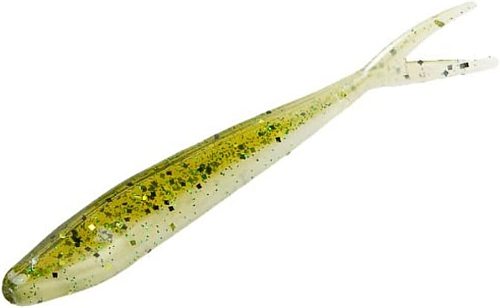
Most soft jerkbaits on the market today are designed to be used in a texas rig (or a variation that we’ll cover later).
These soft plastic baits imitate baitfish, often in a shad profile, and usually have a slit along the back or belly known as a belly slot. This slot is there to help “hide the hook” and makes the hook set easier.
I know it’s a recurring theme when bass fishing, but the green pumpkin color flat out catches fish. Some of my favorite soft jerkbaits are the Zoom Flukes and the Berkley Flatnose Jerk Shad in that color.
Creature Baits
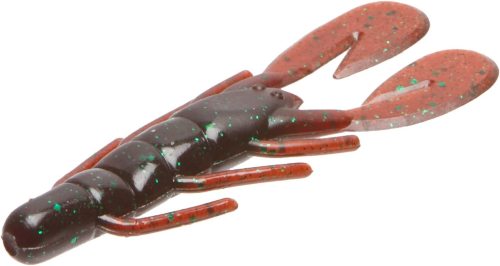
Creature baits have grown in popularity over the years thanks to their unique action. These typically resemble some form of crawfish, frog, lizard, or mixture of all three.
Their corrugated soft plastic body gives them remarkable action underwater and are ideally fished with a texas rig for bass.
Lizards

I like to think of plastic lizards as the perfect mixture between a plastic worm and a creature bait. They do, in fact, resemble a lizard and their slender body with curly limbs really make them move underwater.
These work great for texas rig fishing as they can easily be rigged weedless and get through heavy vegetation where more fish hang out.
Texas Rig Hook Choice
Selecting a hook for texas rigging can seem overwhelming at first, but it mainly depends on what style of bait you’re using and what type of area you’re fishing.
Extra Wide Gap Offset Hooks
An extra wide gap offset worm hook (EWG hook) tends to be the go-to hook selection for most anglers as they’re practically designed to be used in a texas rig.
The advantage to these wide gap hooks is that they accommodate some of your larger body shaped baits like the shad jerkbaits or creatures, while still working well with a worm
The wider gap gives better penetration when you set the hook and makes the rigging process easier.
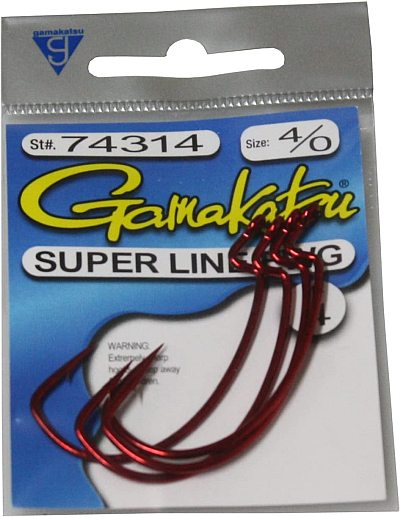
My “go to” EWG hook is the Gamakatsu Superline Offset Worm EWG hook. The heavier gauge steel wire is ideal for braided line and a heavy action rod that’s often used when bass fishing a texas rig.
Straight Shank Hooks
Contrary to popular belief, a straight shank hook can also work well Texas rigged.
These are ideally used with a worm and can be fished truly weedless as the hook point gets completely buried in the body when texas rigging.
Keep in mind that when fishing this method, a strong hook set is crucial in order to get the necessary penetration through the bait and the fish.
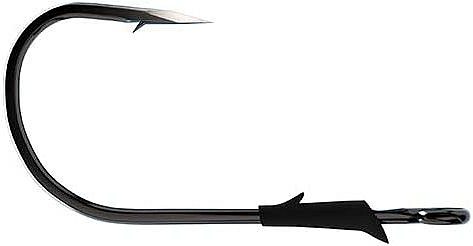
I like to use a straight shank that comes with a double sided bait holder like these from Lazer.
For small baits like senkos and lizards, I tend to stick with 2/0-3/0 hook sizes. For your larger jerk shads, worms, and creatures, 4/0 typically does the job.
Texas Rig Weights
A bullet weight or similar weight is ideal for a texas rig. The bullet shape creates less drag in the water and limits the amount of snagging when fishing in heavy vegetation.
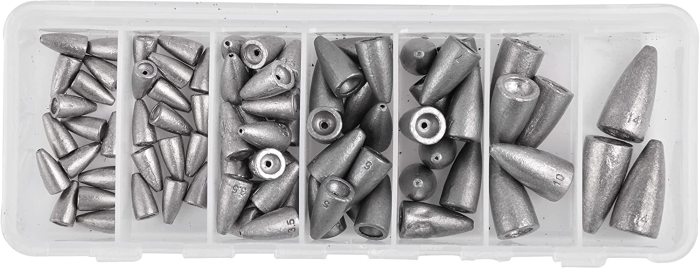
As with all weight options, most manufacturers offer tungsten weight versions of bullet weights. Use these if the goal is getting the bait down quickly or punching through vegetation is necessary.
Punch weights simply refer to specially designed bullet weights that are intended to punch through thick mats or weeds.
It’s important to match the weight you use with the size of the lure that you’re casting. A lighter weight worm like a senko might only need a 1/32 oz or ⅛ oz in order to keep its action.
Meanwhile a larger creature might need a 1 to 1 ½ oz weight when targeting bass under thick vegetation.
Peg the weight?
Whether or not to peg the weight is an important consideration when you fish a texas rig.
Pegging the weight simply means adding a bobber stop above the lure to prevent the bullet weight from sliding down the main line.
This is advantageous when fishing extremely thick vegetation as it limits tangles and foul ups on the rig.
However, when fishing more open water, rocky bottom, or even woody structures, consider not pegging weight at all. When you allow the weight to slide up and down the line, it actually slows the bait’s rate of descent.
I prefer this method as it provides a more natural looking presentation which can result in more bites.
Texas Rig Rod Selection
For the most part, texas rigging means a heavy rig and fishing close to cover. Because of this, a medium heavy or heavy rod is recommended in moderate-fast to fast action.
Having enough backbone in a rod to be able to not only cast, but also pull fish out of dense cover is extremely important. Keep in mind that you should have enough feel in the rod tip to give the rig some action while still being able to properly set the hook.

I like a rod in the 7’-7’6” range for this style of fishing with some of my favorites being the Shimano Zodias Casting Rod and the St. Croix Victory Casting Rod.
Line Selection for Texas Rig Fishing
Since texas rigging is a heavier style of fishing, lines in the 12-20lb test range work well. I prefer fluorocarbon over monofilament for this thanks to its abrasion resistance and near invisibility underwater.
Don’t be afraid to break out the braided line either. Dense cover is where braid shines and many anglers find themselves needing a little extra strength to pull fish out of where they’re hiding.
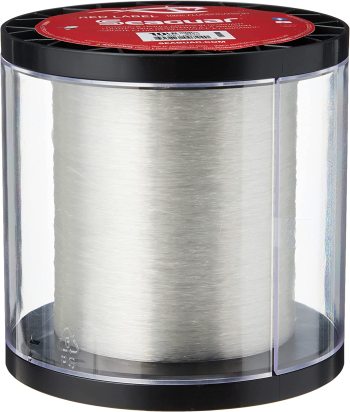
For fluorocarbon, I’m a big fan of Seaguar Red Label and for braid it’s tough to beat Power Pro Super8Slick V2.
How to Fish a Texas Rig For Bass: Presentation techniques
A texas rig’s versatility means that there are many different ways you can fish it. To add, these rigs can practically be fished anywhere, making it a go-to rig for bass fishing.
Dragging
When bass get finicky or lethargic, I like to start dragging a texas rig with a worm. Start by casting close to cover and allow the rig enough time to sink to the bottom. Gently sweep the rod towards yourself in about 3 foot increments and reel the slack in between.
Doing this keeps the bait on the bottom and the short pauses while reeling are often when fish (especially fish that are reluctant to eat) often strike.
Flipping and Pitching
There’s no question that you’ll find more bass close to cover. Accurately casting into cover, however, can prove challenging. This is where flipping and pitching come into play.
I like to use a slightly heavier weight on the end of my rig for this method since it’s a little easier to control.
Start with leaving a rod’s length amount of line out of the rod tip. Lifting your arm up, gently rock the rig back toward yourself like a pendulum. As the rig rocks away from you, release the line to send the cast.
This method is ideal for short, accurate casts into thick cover. If you find yourself needing a little more distance, simply shorten the length of your line prior to casting and underhand the lure away from you a little harder.
Flipping and pitching is also perfect for anglers who want to punch their bait through thick mats of vegetation to reach bass below.
Swimming
Swimming a texas rig is my favorite technique when targeting bass. I like to use either a curly tail worm or a swimbait/jerkbait for this method as they have good action underwater.
Start with a long cast and rather than letting the lure drag along the bottom, pick up the slack quickly and begin retrieving. A faster reel with a higher gear ratio (like a 7.1:1) tends to make this style of fishing a little easier.
I like to mix in a few twitches while I reel and will mix up my speed and depth until I start catching fish. Don’t be afraid to let the rig bounce off the bottom either. It’s not uncommon to catch bass in between bounces.
When to Fish a Texas Rig
There’s almost never a bad time to fish a Texas rig. Thanks to its versatility and reliability, it can be fished year round for bass.
I find myself using them more later in the summer as the vegetation gets thicker since you can rig weedless and get the rig to where the fish are.
In colder times of the year, a Texas rig is great to drag along the bottom and entice reluctant bass.
Texas Rig Variations
There’s no shortage of variations with the Texas Rig. One of my favorites is a weightless rig when casting to bass in shallow water.
Simply using a jerkbait with an EWG hook, you can twitch the bait just under the surface for incredible action.
If bullet weights aren’t your cup of tea but still need to get the bait deeper, consider weighted worm hooks like the Gamakatsu Superline EWG Weighted Hook.
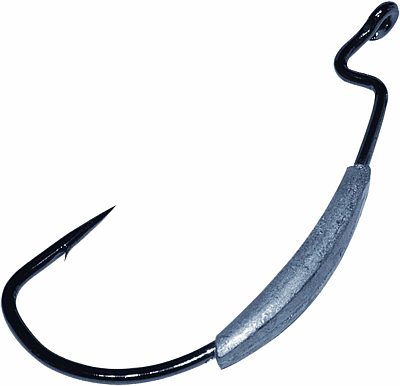
A very popular variation to the Texas rig is something called Tex-Posing. I like to use this when I notice fish short striking but still want to stay relatively weedless.
To tex-pose a lure, simply adjust the hook point so that it barely breaks through the back of the soft plastic and lays flat to the body.
FAQ – Texas Rigs
Though the Carolina rig is great, the Texas rig has far more versatility. It might not be the perfect rig all the time, but chances are a Texas rig (or variation) is going to produce more bass more often.
Absolutely! I love to target Redfish, Snook, and Speckled Trout with Texas Rigs. Twitching a weightless jerkbait across grass flats or underneath mangroves is deadly.
The best bait can change from day to day. However, I prefer to use a bait that has a little action rather than something like a stick bait for Texas Rigs. Curly tail worms, paddle tails, and jerkbaits work fantastic.

